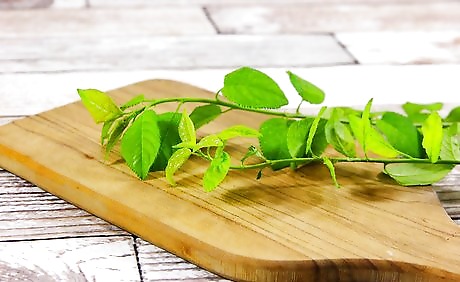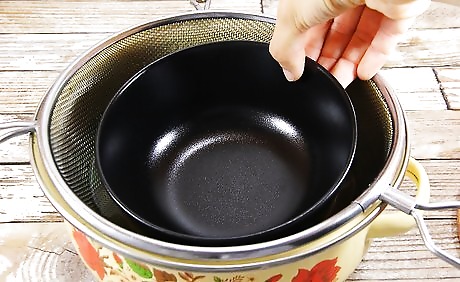
views
Distilling the Herbs

Choose your herb based on your intended use. You can use nearly any herb to make hydrosol. Each herb has its own medicinal properties, and hydrosol cultivate these properties in gentle forms. For a relaxing, soothing blend, choose chamomile, lavender, tea tree, or ylang ylang. For a refreshing, revitalizing hydrosol, go with citrus peel, dandelion, eucalyptus, or peppermint. Other great hydrosols can be made from oregano, rose petals, jasmine, and frankincense. To determine what herb you want to use, research medicinal properties of each herb. For example, lavender is great for stress relief and restful sleep. Use organic, fresh herbs to ensure you get the true medicinal benefits from the plant.

Let the herbs soak in 3 L (101.5 oz) of spring water for 1-3 hours. Pour 3 L (101.5 oz) of spring water into the pot, then dump the herbs into the water. Use a spoon to stir the herbs into the water so they are totally submerged. Then, let the herbs soak in the water for up to 3 hours. Soaking the herbs can help infuse the water and break down the outer coating. If you don’t have time for the herbs to soak, that’s okay. You can still make hydrosol without the soaking process.

Place the strainer into the pot and put the bowl inside. After your herbs soak for 1-3 hours, put the strainer in the middle of the pot. Then, place the bowl inside of the strainer. The bowl catches the hydrosol as it heats up. For best results, use a medium or large-sized glass bowl.

Bring the water and plant matter mixture to a boil. Place the pot on the stove top burner, and use medium-high heat to bring the liquid to a boil. Do this after you place the strainer and bowl inside. Your mix should boil in about 5 minutes or so.

Place the lid upside down on the pot when the mixture begins to simmer. When you start to see bubbles emerging from the liquid, put a glass lid on top of the bowl upside down. Use a lid that is the same size as the pot so moisture does not escape. The handle should face inward, and the lip of the lid should face outward. The lid seals out any air, so you can easily collect the condensed vapor. Do this as soon as the liquid starts to simmer.

Put a bag of ice on top of the upside down lid. Once the lid is in place, put a resealable, plastic bag full of ice cubes on top of the lid. The boiling water created a herbal-infused steam, which rises and condenses on the lid. The condensation becomes hydrosol when it touches the cold lid. Then, the hydrosol drips from the lid and into the bowl. The bag itself is not required, though it makes it much easier to cover the lid in ice cubes. When the bag of ice melts, empty the liquid and fill it with fresh ice.

Simmer the water on medium heat until have enough hydrosol. You can let the hydrosol simmer for a few minutes or until the water is completely gone, depending on how much hydrosol you want to make. As you wait, the vapor condenses onto the lid and drip into the bowl. This can be anywhere from 20 minutes to 2-3 hours.
Storing the Hydrosol

Let the hydrosol cool to room temperature. Once you have enough hydrosol, turn off the heat and let the liquid cool down for 30-60 minutes. While the liquid doesn’t have to be completely cool, it should be cool enough so you can pour it into the containers. Be very careful when removing the bowl so you don’t spill the hydrosol or burn your hands.

Pour the hydrosol into a glass bottle using a funnel. To do this, pour the hydrosol from the bowl into a measuring cup. Then, place a funnel on top of the glass bottle or jar, and pour the hydrosol into the funnel from the measuring cup. This way, you can easily pour the hydrosol into smaller containers. The measuring cup makes it easy to pour the hydrosol into the funnel. If you don’t have a measuring cup, you can use another easy-to-pour container, such as a small cup or jar. You can store hydrosol in small glass spray bottles or glass jars with airtight lids. Cap the hydrosol tightly to keep it fresh.

Store the hydrosol in the refrigerator to extend its shelf life. To keep the hydrosol as fresh as possible, place it in your fridge while not in use. It can last 6-9 months if stored properly.














Comments
0 comment